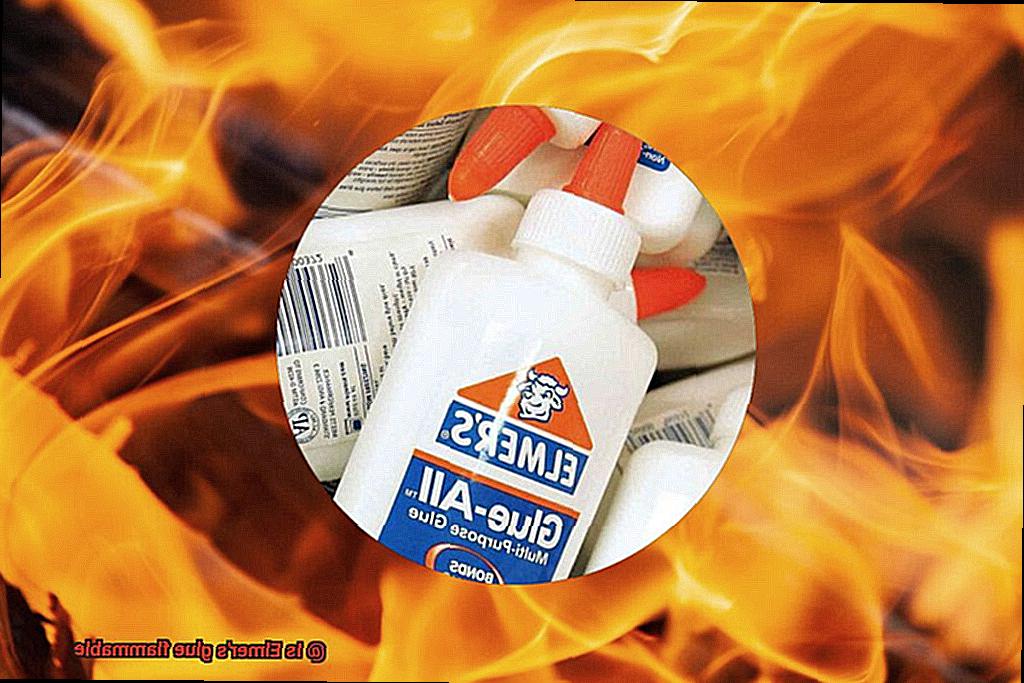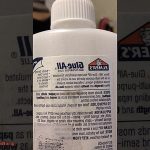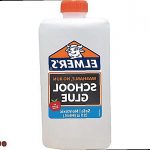You know that trusty bottle of Elmer’s glue that seems to have taken up permanent residence in your home, school, or office? We’ve all been there. Whether it’s saving the day on a craft project, fixing something that went kaput, or acing that school assignment, Elmer’s glue is like the superhero of adhesives.
But here’s the thing: Is Elmer’s glue flammable? Safety first, folks. We need to know what we’re dealing with here. In this blog post, we’re going to unveil the truth about Elmer’s glue and its potential for turning into a mini fireball. No need to panic though – we’ll also give you some tips on how to stay safe while using this sticky stuff.
So grab your detective hats and let’s dive into the fascinating world of Elmer’s glue. We’ll explore its scientific makeup, uncover any fiery risks it may pose, and equip you with all the knowledge you need to keep yourself out of hot water (literally).
Composition of Elmer’s Glue
Contents
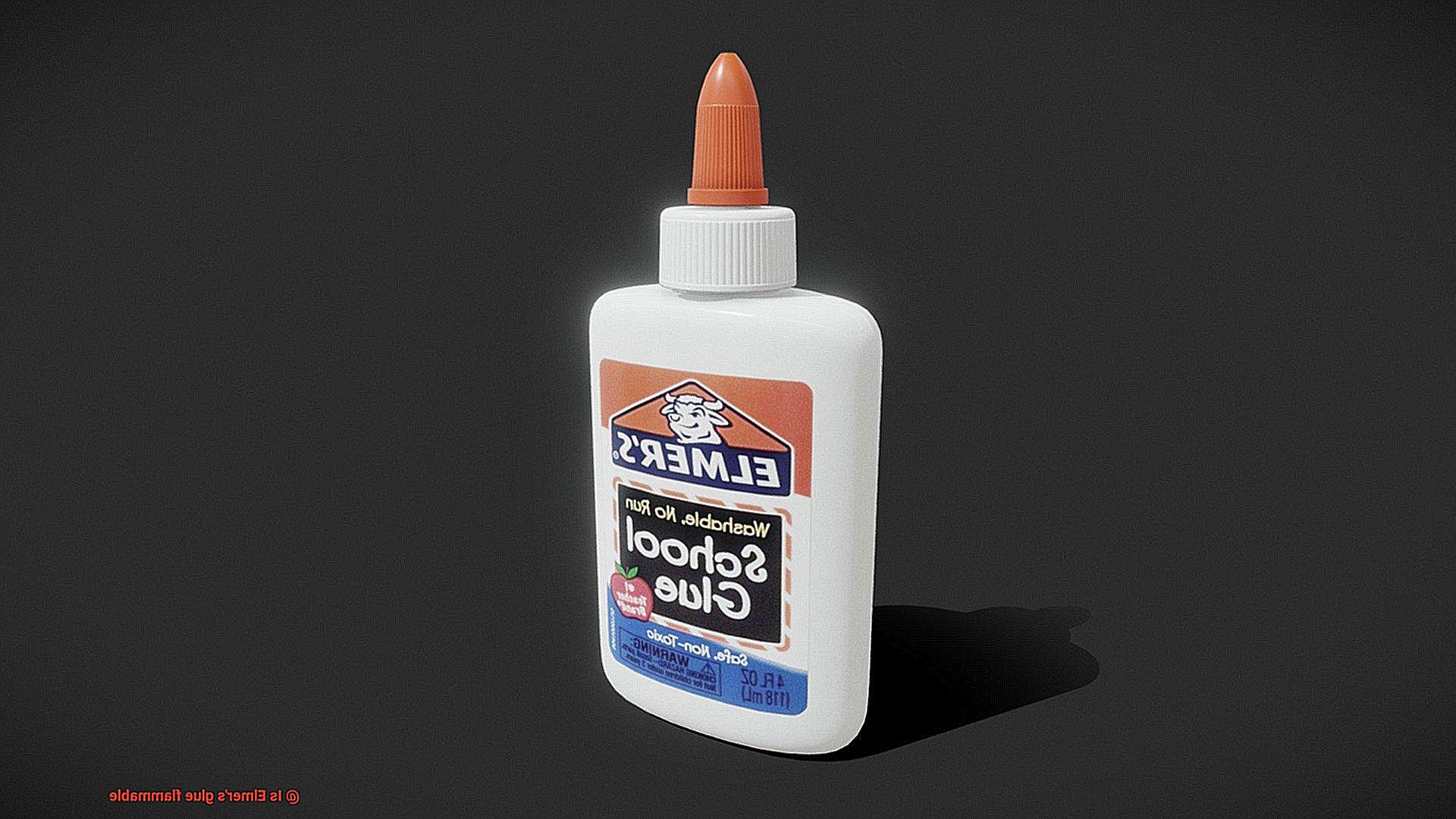
Elmer’s Glue has been a beloved adhesive in arts and crafts projects for decades. But have you ever wondered what makes up this popular glue? In this article, we will delve into the composition of Elmer’s Glue and explore its flammability properties to ensure safe usage.
Composition of Elmer’s Glue:
Elmer’s Glue primarily consists of three main ingredients: water, polyvinyl acetate (PVA), and carefully selected additives. Water forms the largest portion of the glue, giving it its liquid form and facilitating easy application. PVA, a synthetic polymer known for its adhesive properties, acts as the main bonding component, ensuring strong and flexible bonds when the glue dries. The additives in Elmer’s Glue include preservatives, stabilizers, and thickeners, all meticulously chosen to enhance performance without compromising safety.
Flammability of Elmer’s Glue:
When Elmer’s Glue is wet, it is generally non-flammable due to its high water content, which acts as a fire retardant. However, caution should be exercised with dried Elmer’s Glue. Once the water evaporates, leaving behind adhesive polymers, the glue becomes flammable when exposed to heat or an open flame. The adhesive polymers can break down and release flammable vapors, leading to ignition and combustion.
Safety Measures:
To minimize the risk of fire, it is crucial to avoid exposing dried Elmer’s Glue to high temperatures or open flames. Always store the glue in a cool and dry place away from potential ignition sources. It is important to note that Elmer’s Glue is not designed as a fire-resistant adhesive. If you require a fire-resistant adhesive, consult professionals who specialize in such products.
Is Elmer’s Glue Flammable?
Let’s embark on a journey into the captivating world of glue chemistry to find out.
At the heart of Elmer’s Glue is polyvinyl acetate (PVA), a thermoplastic polymer. PVA itself is not considered flammable, which is great news for all the crafting aficionados out there. However, Elmer’s Glue also contains other additives and substances, such as preservatives and stabilizers, which could affect its flammability.
The water content in Elmer’s Glue plays a significant role in its flammability. As a water-based glue, Elmer’s has a higher water content compared to solvent-based glues. This abundance of water makes it less flammable since water has a high heat capacity and acts as a fire retardant, making it challenging for the glue to catch fire easily.
But here’s the crucial part: while Elmer’s Glue may not be highly flammable, it can still burn under specific circumstances. When exposed to an open flame or high heat source, Elmer’s Glue can ignite and burn. The rate at which it burns depends on factors such as the concentration of flammable additives present in the specific formulation of the glue.
It is important to note that different formulations of Elmer’s Glue may have varying levels of flammability due to differences in ingredients and additives used. Therefore, always pay attention to product labels and follow the manufacturer’s instructions to ensure safe usage.
Factors that Affect Flammability of Elmer’s Glue
Today, we embark on a quest to uncover the truth about Elmer’s Glue and its flammability. Prepare to be amazed as we delve into the factors that influence whether this beloved adhesive can catch fire or not.
The Chemistry Behind Elmer’s Glue:
Elmer’s Glue, a water-based adhesive, contains polyvinyl acetate at its core. This non-flammable thermoplastic polymer provides the glue with its adhesive properties. However, other additives and substances present in the glue can affect its flammability.
Factors Influencing Flammability:
Concentration of Flammable Substances:
The higher the concentration of flammable substances like solvents or alcohol in Elmer’s Glue, the more likely it is to catch fire.
Presence of Volatile Organic Compounds (VOCs):
VOCs are organic compounds that can easily evaporate at room temperature. Certain VOCs used in adhesives, including solvents, can contribute to the flammability of Elmer’s Glue. When exposed to heat or an open flame, these VOCs can ignite and cause the glue to burn.
Temperature:
Different types of glues have different ignition temperatures. If Elmer’s Glue is exposed to a flame or heat source that surpasses its ignition temperature, it can ignite and burn.
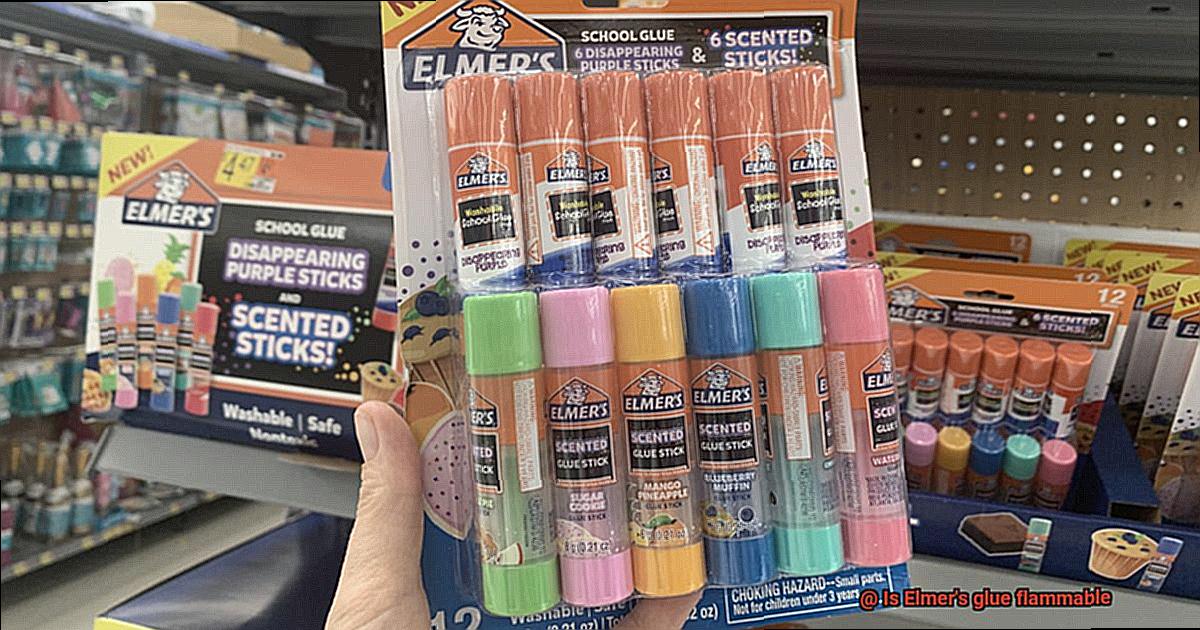
The Role of Water:
Water-based adhesives like Elmer’s Glue have a high water content, acting as fire retardants that make them less prone to catching fire compared to other adhesives.
Safety Measures:
While Elmer’s Glue has low flammability, it still requires careful handling. Avoid exposing it to open flames or high temperatures to reduce the risk of fire. Adequate ventilation is crucial to dissipate any flammable vapors from the glue, further reducing the risk of ignition.
Fire Safety Tips for Using and Storing Elmer’s Glue
While Elmer’s glue is a fantastic adhesive, it’s important to remember some fire safety tips to ensure a safe and enjoyable crafting experience. In this article, we will explore some essential fire safety tips for using and storing Elmer’s glue.
Elmer’s Glue is Not Flammable:
Did you know that Elmer’s glue is not flammable? That’s right. Elmer’s glue is primarily made of water, which does not burn. So, you don’t have to worry about the glue catching fire while you are using it or storing it.
Keep Away from Heat Sources:
Even though Elmer’s glue is not flammable, it’s still important to keep it away from heat sources. Heat can cause the glue to become liquid or evaporate, which may result in a fire hazard. So, always store your glue in a cool and dry place, away from direct sunlight or any heat-emitting objects.
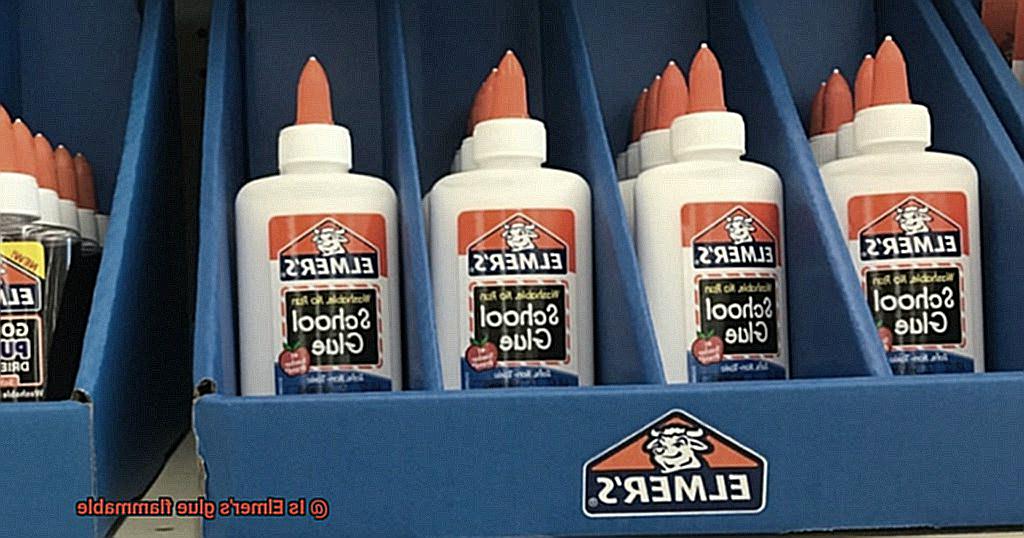
Use in Well-Ventilated Areas:
When using Elmer’s glue, make sure to work in well-ventilated areas. While Elmer’s glue is non-toxic, inhaling large amounts of its fumes may cause mild respiratory irritation. So, open windows or use a fan to ensure proper air circulation and dissipate any fumes.
Avoid Contact with Open Flames:
It is crucial to avoid contact between Elmer’s glue and open flames. Even though the glue itself is not flammable, it can serve as fuel if exposed to an open flame. So, never use the glue near lit candles, lighters, or other sources of fire.
Proper Disposal:
When disposing of Elmer’s glue bottles, empty the remaining glue into a plastic bag or container filled with water. This dilutes the glue and prevents it from drying out, reducing the risk of accidental combustion. Seal the bag or container and dispose of it according to local waste disposal guidelines.
Teach Children about Fire Safety:
If children frequently use Elmer’s glue for crafts, it’s essential to educate them about fire safety. Teach them to never use glue near open flames or heat sources, work in well-ventilated areas, and properly dispose of glue bottles. By instilling these habits at a young age, children can use Elmer’s glue responsibly and safely.
Potential Hazards of Igniting Elmer’s Glue
If you’ve ever wondered about the potential hazards of igniting Elmer’s glue, buckle up for a wild ride into a world of danger. This seemingly innocent adhesive holds secrets that can ignite chaos. So, prepare to be amazed and alarmed as we uncover the burning truth.
- Let’s start with the basics: Elmer’s glue is primarily composed of polyvinyl acetate, a polymer that is not inherently flammable. However, it’s important to note that different variations of Elmer’s glue may contain additional ingredients that could potentially increase its flammability. But what exactly are the risks involved?
- Toxic Fumes: Igniting Elmer’s glue releases harmful fumes and smoke. As the glue is heated, chemical changes occur, releasing volatile organic compounds (VOCs) into the air. Inhaling these fumes can irritate your respiratory system and pose serious health risks.
- Toxic Byproducts: When Elmer’s glue combusts, it generates toxic gases like carbon monoxide and carbon dioxide. These gases have the potential to displace oxygen in enclosed spaces, creating an environment that is unsafe and potentially lethal.
- Fire Risk: While Elmer’s glue may not be highly flammable on its own, once ignited, it becomes a fuel source for fires. Its ability to burn at relatively low temperatures makes it an accelerant for spreading flames, increasing the risk of significant damage and danger.
It cannot be stressed enough that intentionally igniting Elmer’s glue is an absolute no-go. The hazards involved far outweigh any curiosity or perceived benefits. Using it as a fire starter or accelerant is especially treacherous and should never be attempted under any circumstances.
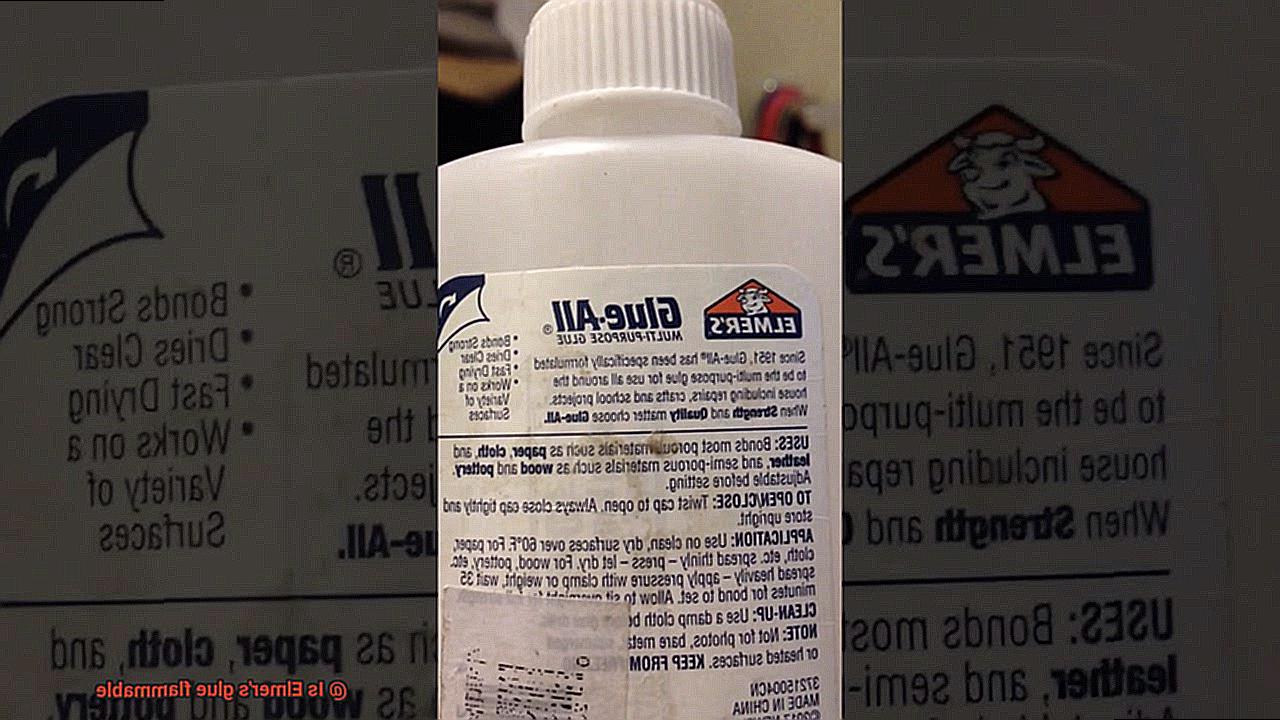
To ensure your safety, always keep your glue away from heat sources, work in well-ventilated areas, and educate children about responsible usage. Remember, safety should be the foremost concern in all our crafting adventures.
Common Uses for Elmer’s Glue
In the world of crafting, DIY projects, and school assignments, Elmer’s glue is a trusty companion that holds everything together. This versatile adhesive has been a staple for generations, providing a strong bond that withstands the test of time. In this comprehensive list, we will explore the common uses for Elmer’s glue, from paper crafts to woodworking and everything in between.
Paper Crafts:
Elmer’s glue is the go-to adhesive for all your paper-based projects. Whether you’re creating collages, scrapbooks, or handmade cards, this glue ensures a strong bond that dries clear, enhancing the beauty of your creations.
School Projects:
From building models to constructing presentation boards, Elmer’s glue is an essential tool for students. Its non-toxic formula ensures safety while bonding different materials together, making it perfect for a variety of project types.
Woodworking:
Surprisingly, Elmer’s glue finds its place in the world of woodworking. It can be used to bond wood pieces together, fill gaps or cracks, and even serve as a finish for certain types of wood. Its strong adhesive properties make it an effective choice for woodworking projects.
Home Repairs:
Don’t underestimate the power of Elmer’s glue when it comes to home repairs. It can fix broken ceramics, repair loose tiles, and secure loose parts on furniture. With its versatility and strength, Elmer’s glue is a handy tool to have around the house.
Slime-Making:
Elmer’s glue has gained popularity as one of the main ingredients in slime-making. When mixed with other substances like borax or contact lens solution, Elmer’s glue creates a stretchy and gooey substance that kids love to play with.
Crafting Projects:
Let your creativity soar with Elmer’s glue in various crafting projects. Create unique jewelry pieces, make stunning ornaments, or even decorate clothing. Elmer’s glue adheres to different materials, making it an excellent choice for these types of projects.
Alternatives to Flammable Adhesives
Unleashing your creativity shouldn’t come at the cost of safety. When it comes to adhesives, flammability can be a concern. But fear not, there are numerous non-flammable alternatives that provide a safe and effective solution. Let’s dive into these options and explore the considerations to keep in mind when choosing one.
Water-based Adhesives:
Seeking a non-flammable option? Water-based adhesives are the way to go. Crafted from a mixture of water, polymers, and additives, these adhesives create a reliable bond without the risk of fire. From paper and fabric to wood and plastic, they work wonders on a wide range of materials.
Hot Glue Guns:
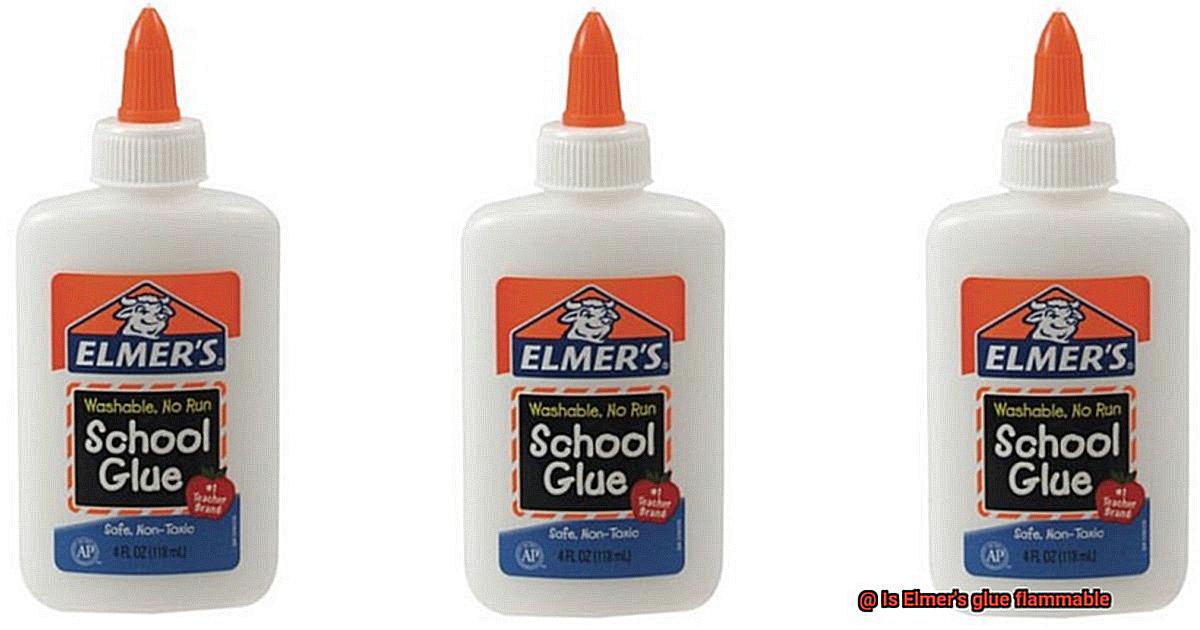
Hot glue guns offer another non-flammable adhesive solution. These guns use solid adhesive sticks that melt when heated, forming a strong bond upon cooling. Made from thermoplastic polymers, they are free from flammable ingredients, making them perfect for quick fixes and craft projects.
Epoxy Adhesives:
For exceptional durability and heat resistance, epoxy adhesives are worth considering. These non-flammable adhesives consist of two components – resin and hardener – that create a powerful bond when mixed together. From metal bonding to repairs, epoxy adhesives are versatile and reliable.
Double-sided Tape:
When it comes to mounting or temporary bonding needs, double-sided tape is an excellent non-flammable option. Featuring an adhesive layer on both sides of a thin film or foam material, it provides a secure hold without leaving behind residue. Easy removal is an added bonus.
Silicone-based Adhesives:
Looking for flexibility, weather resistance, and high-temperature tolerance? Silicone-based adhesives have got you covered. Used in construction, automotive, and electronics industries, these non-flammable adhesives create a reliable bond for materials like glass, metal, and plastics.
Considerations when Choosing:
Selecting a non-flammable adhesive requires thoughtful consideration of your project requirements. Here are some factors to keep in mind:
- Material Compatibility: Ensure the adhesive is suitable for your specific materials.
- Application Method: Different adhesives require specific application methods – brush-on, squeeze tube, or spray.
- Drying/Curing Time: Consider the required drying or curing time for your project.
- Longevity: If durability is crucial, choose an adhesive with excellent longevity and resistance to aging.
MgTtR5YTzvI” >
Conclusion
To sum up, Elmer’s glue is typically considered non-flammable when wet because of its high water content. However, caution is crucial when dealing with dried Elmer’s glue, as it can easily become flammable when exposed to heat or an open flame. The adhesive polymers within the glue have the potential to break down and release flammable vapors, which can lead to ignition and combustion.
It’s important to note that different formulations of Elmer’s glue may vary in terms of flammability due to differences in ingredients and additives. Therefore, always pay close attention to product labels and diligently follow the manufacturer’s instructions for safe usage.
To ensure your safety while using Elmer’s glue, it is absolutely essential to avoid subjecting dried glue to high temperatures or open flames. Store the glue in a cool and dry place far away from any potential ignition sources. Additionally, proper ventilation is key in order to dissipate any flammable vapors emitted by the glue.
Furthermore, if you are concerned about flammability, it might be worth considering non-flammable alternatives for adhesives. Water-based adhesives, hot glue guns, epoxy adhesives, double-sided tape, and silicone-based adhesives are all excellent options that offer reliable bonding without the risk of fire.
Always remember that safety should be your top priority when working with any adhesive or potentially flammable substance.

